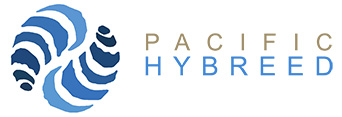Nonnative Oysters in the Chesapeake Bay
Committee on Nonnative Oysters in the Chesapeake Bay [J. Anderson and D. Hedgecock (Co-Chairs), M. Berrigan, K. Criddle, W. Dewey, S. Ford, P. Goulletquer, R. Hildreth, M. Paolisso, N. Targett, R. Whitlatch]. 2004. Nonnative Oysters in the Chesapeake Bay. National Research Council of the National Academies. The National Academies Press, Washington, D.C. 325 pp.Shellfish have been transported and introduced by humans to areas outside of their native ranges for centuries. This study by the National Research Council, which was co-chaired by Pacific Hybreed founder Hedgecock, examined the general biological, legal, and economic consequences of introducing non-native species of shellfish, focusing, in particular, on a proposal to introduce the non-native Suminoe oyster into Chesapeake Bay to replace stocks of the native eastern oyster, which had been devastated by over-fishing and diseases.
